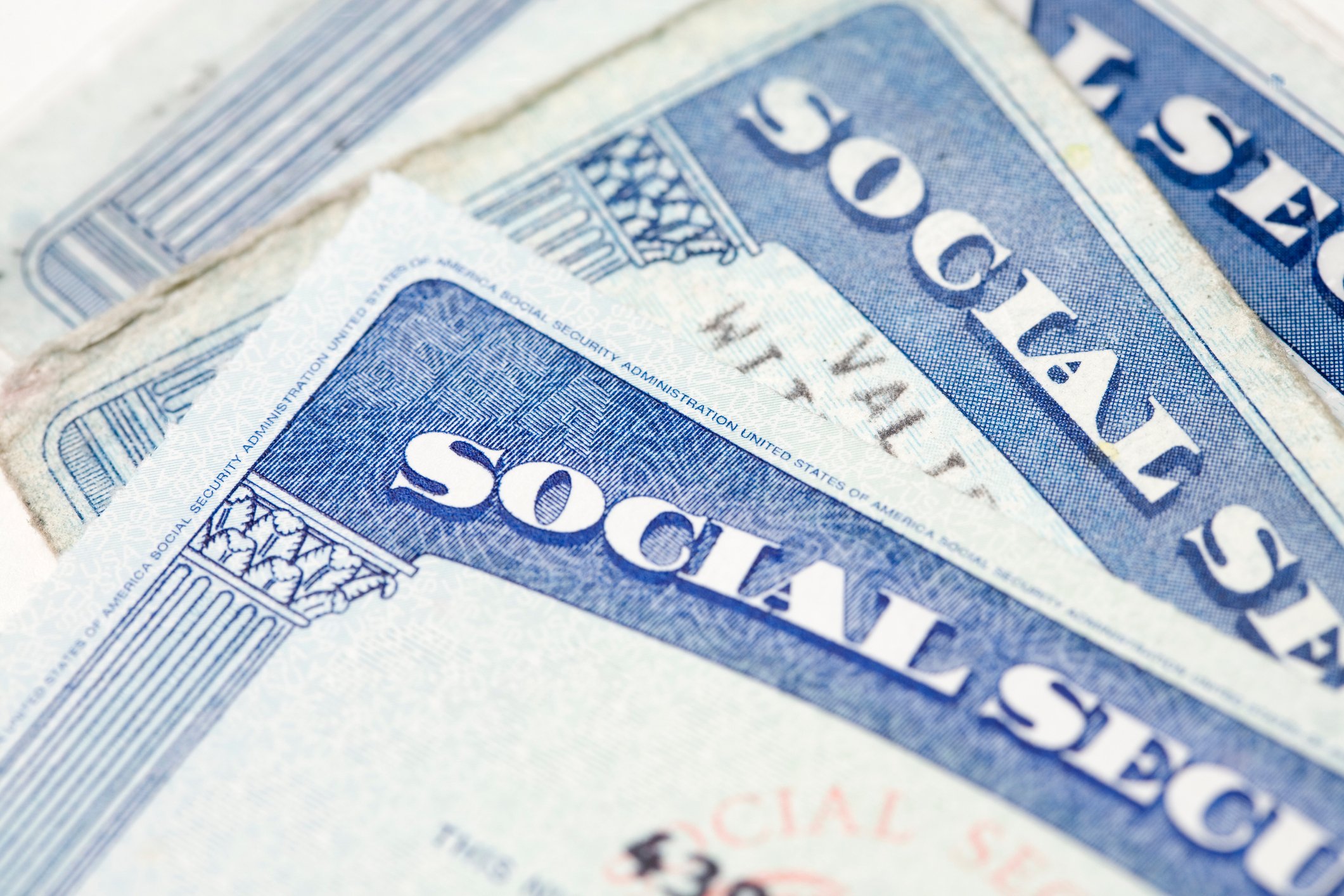Earlier this month, on Jan. 1, Social Security celebrated the 80th anniversary of the first retired worker benefit being paid out. The rest, you could say, is history, with Social Security becoming one of the most relied-upon social programs for the elderly over the next eight decades.
According to figures from the Social Security Administration, 62% of current retirees lean on the program for at least half of their monthly income, with 34% reliant on Social Security for virtually all of their income. Without this guaranteed monthly stipend, it's estimated that the elderly poverty rate would soar to north of 40%, from a current poverty rate of 9%.

Image source: Getty Images.
Social Security's payroll tax is its funding workhorse
Although Social Security has three primary funding mechanisms -- a payroll tax, interest income earned on its asset reserves, and the taxation of benefits -- it's the 12.4% payroll tax affixed to earned income that does a majority of the heavy lifting.
Every year, the Social Security Board of Trustees publishes a report that highlights the short-term and long-term outlook for the program, as well as digs deep into its financials, allowing anyone interested to learn how Social Security generated income and spent the money it brought in. For 2018, Social Security's revenue generation topped $1 trillion for the first time ever, with the payroll tax on earned income (i.e., wages and salary but not investment income) responsible for $885 billion of this $1 trillion in collected revenue. When I say it's the program's workhorse, I mean it.
However, Social Security's payroll tax offers a loophole that allows well-to-do Americans, including President Donald Trump, the opportunity to escape taxation on a significant portion of their income.

President Trump behind the presidential podium. Image source: Official White House Photo by Joyce N. Boghosian.
Trump will pay a lot less in Social Security payroll tax than you probably realize
You see, Social Security's payroll tax has an attached earnings cap, which in 2020 is $137,700. This means all earned income between $0.01 and $137,700 is subject to the payroll tax, while any wages and salary above this amount are exempt. Roughly 94% of working Americans won't hit this earnings cap in 2020, and will therefore be paying into Social Security on every dollar they earn. Meanwhile, the ultrarich, capable of making more than $50.4 million in earned income this year (i.e., more than $137,700 per day), would be done contributing to the Social Security program by the end of New Year's Day.
Thus, in Donald Trump's case, he'll be responsible for paying into the Social Security system on his earned income up to $137,700 in 2020. This works out to $17,074.80 in payroll tax paid this year, no matter how much income above and beyond $137,700 Trump winds up earning.
Per the Social Security Administration, the amount of earned income that's escaping the payroll tax has surged from a little more than $300 billion in 1983 to approximately $1.2 trillion by 2016. As income equality increases, the percentage of wages and salary exempted from the payroll tax is liable to rise.

Image source: Getty Images.
The not-so-cut-and-dried payroll tax dilemma
Among the many "fixes" proposed to strengthen the Social Security program and fight back against an estimated $13.9 trillion cash shortfall over the next 75-year period is the idea of raising or eliminating this earnings cap associated with the payroll tax.
Right now the earnings cap is tied to increases in the National Average Wage Index (NAWI). If, say, the NAWI increases by 4% from one year to the next, the tax cap will also increase by a commensurate 4% -- the one exception being if and when Social Security's cost-of-living adjustment (COLA) is 0%, upon which the earnings cap also stays stagnant. The earnings cap will, however, play catch-up once a positive COLA is passed along.
Plain and simple, raising or eliminating the payroll tax cap would require that the well-to-do like Donald Trump pay more into the system. With the Trustees forecasting a complete exhaustion of Social Security's asset reserves by 2035, this extra revenue would really come in handy with regard to fighting back against the program's cash shortfall.
Sounds like a great plan, right? Well, not so fast.
The whole reason the payroll tax earnings cap exists is because the Social Security program also caps the monthly payout an eligible beneficiary can receive at full retirement age, which in 2020 is $3,011. This means a wealthy individual who earns $50 million a year for 35 years would potentially be taxed by Social Security on the entirety of their income, yet would only be eligible to receive $3,011 a month in return from Social Security. Admittedly, Trump isn't reliant on Social Security in any way. Nevertheless, there is a rhyme and reason as to why the payroll tax earnings cap exists.
But just because reasoning exists, it doesn't mean the calls for raising or eliminating the payroll tax earnings cap loophole for the rich are going to die down anytime soon.





